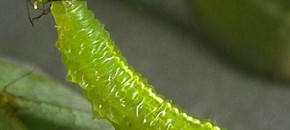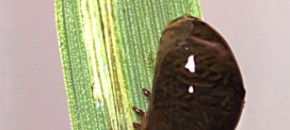The New Jersey Department of Environmental Protection Pesticide Control Program (NJDEP) has announced that federal agricultural Worker Protection Standard (WPS) compliance farm inspections will be conducted mid-May through July. Be a prepared agricultural employer. Take the necessary actions this week to make sure your farm is in compliance to avoid citations. Two outstanding farm employer resources […]
Continue reading...Fruit IPM Report May 14, 2014

This week in Fruit IPM Brown Marmorated Stink Bug (BMSB): Emergence from overwintering sites has started! Both male and females are being found in pheromone traps and blacklight traps throughout the state. Any insecticides or insecticide mixes that are used for oriental fruit moth, plum curculio, codling moth or other pests should now include materials […]
Continue reading...Cereal Leaf Beetle in Wheat

I was out scouting some wheat fields in Burlington County today. In general the fields looked in good shape and there were no major concerns. I did see some rather low numbers of cereal leaf beetle larvae in one field. The larva numbers were well below threshold. We need to keep an eye on fields for […]
Continue reading...Copper Bactericides for Peach Bacterial Spot Management
Fruit Infection Effective management of bacterial spot on peach and nectarine necessitates application of bactericides during the post-bloom cover spray period. Early fruit infections during the first two to three weeks of this period generally result in large, deeply pitted blackened lesions that often ooze with sap. Later season fruit lesions are less pitted and […]
Continue reading...Veg IPM Update: Week Ending 5/14/14

Vegetable IPM Report 5-14-14 – Click to View | Download | Print Maps for the Week –Pepper Weevil Trap Catch Map –European Corn Borer Population Map Topics for the Week Sweet Corn Cole Crops BMSB Pepper Weevil Update
Continue reading...Potato Disease Forecasting Report 5-13-14
Potato Disease Forecasting Report 5-13-14 – Click to Download We will be tracking DSVs for Late blight development and calculating P-days for initiating the first early blight fungicide application. The first late blight fungicide application is recommended once 18 DSVs accumulate from green row. Green row typically occurs around the first week in May in southern […]
Continue reading...